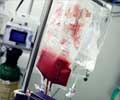Researchers from the University of Warwick have identified two bacteria genome that can save orchards from being destroyed due to incurable diseases and also assist in human blood transfusion.
It is seen that the bacteria produces a family of chemical called desferrioxamines. Desferrioxamine E is produced by the bacterium Erwinia amylovora. This chemical is used by the bacterium to infect apple or pear tree to acquire iron from them.The infection known as “Fire Blight” spreads through out the orchard and economically crippling it. The bacterium Streptomyces coelicolor produces desferrioxamine B, which is used to treat iron overload in humans – for instance following extensive blood transfusions.
By studying the genomes of the two bacteria, the researchers were able to work out that each uses a similar biochemical pathway to produce desferrioxamines. In both cases they use a “remarkable” trimerisation-macrocyclisation reaction cascade in the key step. The researchers purified the enzyme responsible and showed that it could catalyse the reaction cascade in a test tube.
The current industrial process to create desferrioxamine B relies on the fermentation of the bacterium Streptomyces pilosus. The Warwick-led research has identified how Streptomyces bacteria create it using only four enzyme catalysts and four different building blocks.
In contrast, the laboratory synthesis of desferrioxamine B requires 10 steps and uses numerous chemicals. Harnessing the enzymes may result in much cheaper pharmaceuticals based on desferrioxamine B and manipulating them could lead to the creation of new orally-active analogues of this important pharmaceutical.
The new understanding of how desferrioxamine E is created by Erwinia amylovora opens the way for the creation of new chemical inhibitors that may prevent this bacterium from inflicting Fire Blight on orchards
Advertisement
Source-Eurekalert
BIN/J











